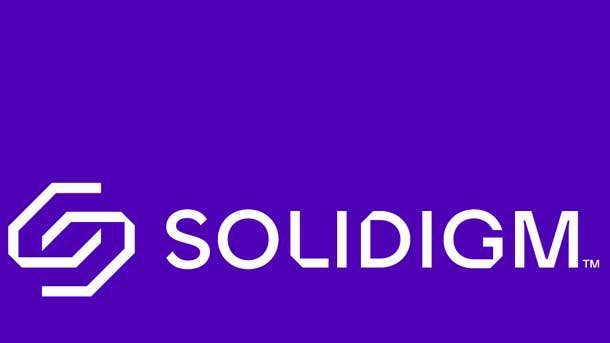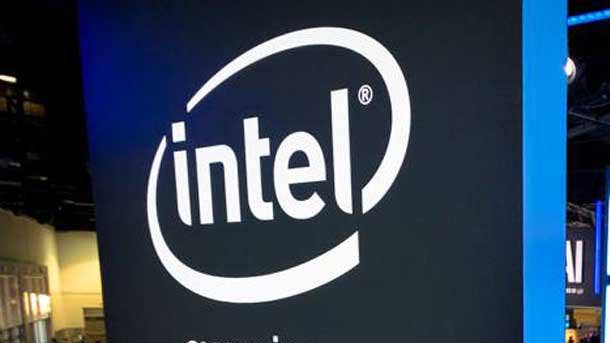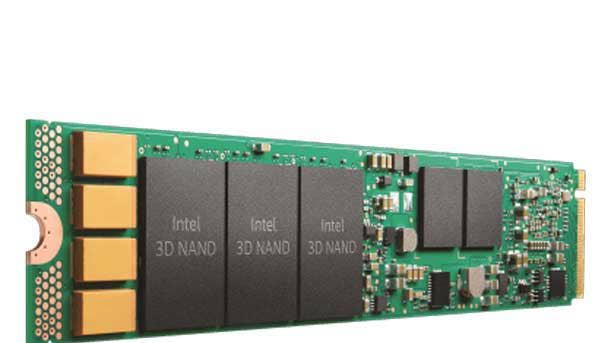Solidigm CEO: Spinning Out Of Intel To SK Hynix ‘Gives Us The Greater Scale We Need’
‘We’re working on back-end manufacturing capability with the agility to figure out where we want to do the assembly of the SSDs. We have wafer supply coming out of China, and we’ll have wafer supply, a different technology, coming out of Korea. ... We work very closely with the governments to make sure we fully understand what we need to do and are maximizing the supply we can get for our customers,’ says Solidigm CEO Rob Crooke.

New Year, New Beginning
Intel ended the year 2021 with a bang. The company on Dec. 29 unveiled a two-phase plan to sell its SSD business and certain NAND SSD-associated intellectual properties, as well as its Dalian, China-based NAND memory manufacturing facility, to South Korea-based semiconductor manufacturer SK Hynix, in a deal worth $7 billion. That includes the creation of a new company, Solidigm, owned by SK Hynix. The Korean company is also slated to pay Intel an additional $2 billion after it acquires Intel’s remaining NAND business assets in 2025.
For Intel, the move comes at an interesting time for the semiconductor business. Investment in semiconductor manufacturing is very, very expensive, and Intel is planning huge investments in U.S.-based semiconductor manufacturing. The company in January unveiled plans to invest over $20 billion to construct two new leading-edge chip factories in Ohio, in addition to $20 billion it plans to invest in two new fabs in Arizona.
Rob Crooke, CEO of Solidigm and a 10-year veteran of Intel’s memory business, told CRN that, while the memory business has been a profitable one for Intel, Intel realized that to get the scale needed to continue to serve customers’ growing memory and SSD requirements required a huge investment in scale, and the SK Hynix had the scale necessary.
“The creation of Solidigm, as a subsidiary of SK Hynix, gives us the greater scale we need. ... With the commitment of a growth memory-focused company like SK Hynix and backing of the even larger SK Group, we’re excited about building on what we built at Intel to build something even bigger,” Crooke said.
Crooke also talked with CRN about plans for the companies, supply chain issues, and the possible impact of U.S.-China trade tensions. For details, click through the slideshow.
Final note: Crooke told CRN how to pronounce “Solidigm.” It’s a combination of solid state and paradigm.

What brought you to Solidigm?
What’s brought me to Solidigm is my work at Intel. I’d been working at Intel for quite a while. And I’d been running the memory business for Intel for the last 10 years. So we had a tremendous run at Intel. We’re very grateful for our time there. We went from very close to zero to over $4 billion in revenue, and delivered some great innovations in the data center and client SSD space. We also created what I would call a great foundational culture to build on. But to get to the next phase, we had to do something different. And so the creation of Solidigm, as a subsidiary of SK Hynix, gives us the greater scale we need to reach that next phase. And I’m honored to be the new CEO after talking to SK Hynix. I was heading the memory business for Intel, so it was a natural thing. With the commitment of a growth memory-focused company like SK Hynix and backing of the even larger SK Group, we’re excited about building on what we built at Intel to build something even bigger.
You talked about this move as away to gain greater scale. How important is scale?
Let me put it in the context of our customers. For our customers, we want to play a bigger role in their success. We want be their go-to partner for optimized storage. In order to do that, we want to create a broader portfolio of products and technology more optimized for their use. We want to have a larger supply footprint that’s needed in a faster growing market. And we want to have the scale to have the staying power to be a partner that can grow with them. That’s what customers are looking for. And scale gives us that: the ability to invest more in a broader portfolio, both technology and products; larger supply footprint; more global; and the staying power they need. They’re investing in partnerships with us, and partnerships are a big deal for us. Storage is a critical element of customer solutions, and they want someone there that they’re partnering with that they can count on in the future.
So why didn’t Intel want to do that on its own?
I think you’ll have to ask Intel. But my view is, there’s a lot of opportunity for Intel in the logic space. And there’s a huge focus there to grow their business in terms foundry and what have you. And there’s a lot of work for them to do. They needed to focus on that. And a company like SK Hynix that’s a memory-focused company is a better fit to get to larger scale because there’ll be significant investment in capacity and in R&D required.

Intel is in the process of investing in its own U.S. foundry business. Could Intel someday get back into the NAND business and maybe even compete with what you’re doing? Or is that off the table?
Well, as you can imagine, when you sell a business to someone else, there’s naturally some covenants in there that say you won’t reenter [the business] immediately after. So there’s some things related to that you can imagine that are natural. But I think Intel has plenty of focus on their opportunity in their current growth strategy. And they’ve decided to partner for memory, in certain types of storage and DRAM.
Intel sold 80 percent of its NAND and SSD business to SK Hynix in the initial phase. And the final 20 percent will go to SK Hynix in another couple years? How does that work?
Yes, we have two phases to the creation of Solidigm. The first phase is all of the factory assets and all of the SSD and NAND engineering and what have you. And then in the second phase, the process technology and engineering and the folks who operate with that will come. So it’s a two-step process. This is the first step. And then the second step happens in a couple years.
After that second step, will Intel have an equity stake in Solidigm or SK Hynix?
It would not be part of the original plan, that’s for sure. And, who knows? That certainly is something for everybody to figure out later on.

Has the SSD and NAND business that Intel is divesting been a profitable business for Intel?
Yes. We’ve been a profitable business most years for Intel. The opportunity for us, though, is to build on that foundation that Intel has created to create this greater scale together with what SK Hynix memory has to offer, and with what Intel has to offer. And we create this Solidigm organization focused on the growth of storage in non-volatile memory which is, as you know, a very fast growing market.
Analyst firm Trend Focus reported that in the third quarter 2021, Intel had a 4-percent market share and SK Hynix a 14.3 percent share in total SSD units sold, for a combined 18.3 percent market share. In terms of exabytes shipped, Intel had a 9.0-percent share and SK Hynix a 10-percent share, for a total of 19 percent. Do you expect those market shares to grow as Solidigm and SK Hynix come together?
Yes, absolutely. We plan to grow faster than the market and take share over time. The numbers you shared sounded like the client SSD market segment share. The fastest growing segment of the NAND business is the data center segment, and we’re number two in that space with over a 20-percent market segment share, depending on whose numbers you look at. And that’s been the primary driver of our business, the data center SSD business. With the creation of Solidigm, our expectation is to grow the data center business even faster than the market, and we see a tremendous opportunity in the client business as well. We’ve got some exciting technologies. We’ve got two technology bases coming together.
And it allows us to provide more optimized products for our customers so that we can have a broader product portfolio and they can have more optimized products. For instance, we have very large capacity drives that are enabled by our QLC or four-bit-per-cell technology for our largest data center customers. And we have some very cool value products based on similar technology for the client space where we’re doing caching. And so customers get a great experience, but they also get it in an affordable technology. But [SK Hynix also has] some great charge trap flash technology that’s good for TLC and the smaller capacity drives for higher performance in the data center. And so when we combine those together, we look at how to provide an optimized product portfolio for our customers. We believe we can do a better job servicing customers from a broader product portfolio that is more optimized for what the customers use as opposed to trying to stretch things across too many different usages.

As you look at the SSD business and the NAND memory business for 2022, what kind of growth are you expecting? How big is this market going to be?
If you look at the averages for the industry, the data center market is expected to grow significantly. In terms of bits, growth will be in the 30 to 40 percent range. And then, depending on pricing, it can grow in the high teens revenue-wise. Our expectation is to try and grow faster than that.
How are supply chain issues in this part of the business?
Supply chain is a big problem for the industry. We want to be part of the solution. We’re a high-growth semiconductor business, and SK Hynix wants to invest in high-growth semiconductor areas. So yeah, we’re planning on being part of the solution. But we also have our own supply chain things we need to work at just like everybody else in the industry does. And just like everybody else, we’re working hard to make sure that we have the answers there for our customers.
What are you doing to be part of the solution?
We’re investing in capacity and driving growth faster than the market so that we can serve our customers to support their growth needs. Their growth needs are happening. And we’ve been investing in the capacity to serve them. And I think the combination of SK Hynix and Intel in the creation of this new company enables us to get that scale that we need, both in terms of product portfolio and in terms of footprint, to supply that larger market. Customers are looking for someone with the scale and the staying power that can grow with them.

Part of what Intel is selling includes a manufacturing plant in Dalian, China. Is that the total sum of the manufacturing facilities of Solidigm?
Our wafer supply will come from the Dalian facility, but SK Hynix also has significant factories in Korea. They’re a very large manufacturer in Korea. So we’ll have the opportunity to use supply from both of those locations.
With the current economic and political tension between the U.S. and China that is looming over trade and business between the two countries, what are you seeing as some geopolitical issues that might impact the SSD business and the Solidigm and SK Hynix business in particular?
Our goal is to try to make that as transparent as possible to our customers. We’re working on back-end manufacturing capability with the agility to figure out where we want to do the assembly of the SSDs. We have wafer supply coming out of China, and we’ll have wafer supply, a different technology, coming out of Korea. It’s up to us to have the agility to be able to support our customers. And it’s every intent for us to have that ability to support them. Meanwhile, obviously we work very closely with the governments to make sure we fully understand what we need to do and are maximizing the supply that we get for our customers.
Intel is investing in a U.S. foundry business on the compute side because of a U.S. government push lessen dependance on overseas manufacturing, particularly in China. Might the U.S. government want to move some of the storage manufacturing out of China as well? Could that impact your plans there?
Long term, the investment and the support of semiconductor investment, whether it’s in R&D or manufacturing, by the United States is a very positive thing for the industry. And so you know, it will influence people’s behavior over time. So I’m super excited about the fact that the U.S. is increasing its support for semiconductors, both manufacturing and R&D. I hope we can push some of these things all the way through the process to get to the end-state. And I think it will impact companies’ behavior and where they invest in terms of manufacturing and what have you. But for us, that’s a long-term strategy and something we’re still working through.